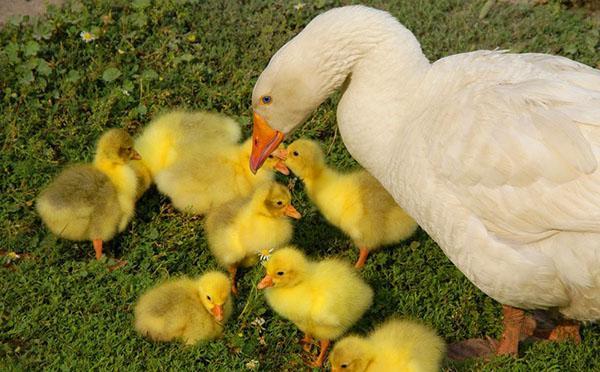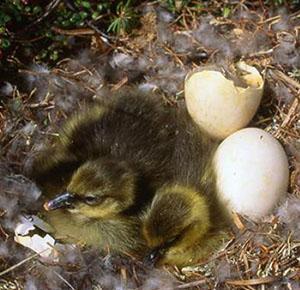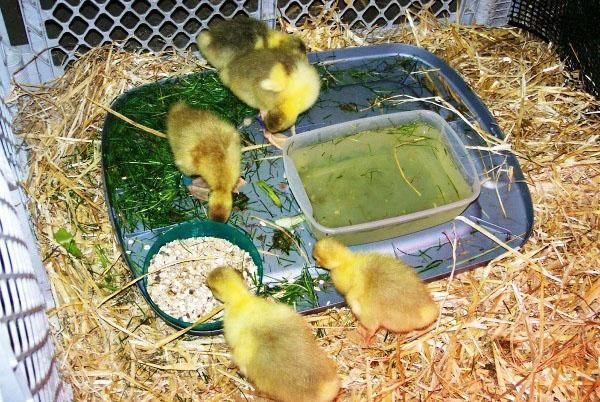Feeding and keeping goslings for the first 3 weeks of life

Domestic geese are hardy and unpretentious birds, however, in order to grow an adult out of a small chick, you will have to adjust to the rhythm of the chicks' life. In order for the livestock to grow up healthy, small goslings should receive feeding and maintenance for the first 3 weeks according to their needs, since it is this age that is important for the further formation of the immunity of an adult bird.
The first days of life

The water in the baby's drinking bowl must be boiled!
In a week
 At this age, chicks eat 5-6 times a day. Add to the diet:
At this age, chicks eat 5-6 times a day. Add to the diet:
- grated carrot - a source of carotene,
- chopped peas - a source of protein,
- fish oil - a source of Omega 3,
- tremors rich in B vitamins,
- bone meal is a source of protein.
Before feeding weekly goslings, you need to prepare a drink for them. Now potassium permanganate is added to the water in a small amount.
Two weeks of age
 During this period of development, mash is added to the diet. They are prepared from boiled vegetables - carrots, beets, potatoes, etc.
During this period of development, mash is added to the diet. They are prepared from boiled vegetables - carrots, beets, potatoes, etc.
The mash should be crumbly so that the liquid consistency does not clog the airways of the birds!
It is useful to add compound feed to the brood ration. In addition, chicks need gravel for proper digestion, as well as chalk, sand, crushed shells,
Three weeks
Salt is now added to the already formed menu of chicks; you can leave a little crushed overnight. The number of feedings is reduced to 3-4 times a day. At this age, babies can begin to be released for walks, preferably in an area with suitable grass. If you follow these simple instructions, the breeder will have no problem feeding the goslings at home.
Keeping goslings

If chicks grow without a brood hen, it is important to maintain a stable temperature of 28-30 ° C.
Goslings lack their own thermoregulation for the first 10 days!
If the babies are cold, they stick close to each other and hardly eat, and if it is hot, they drink a lot and keep their beaks open.
 The cleanliness of the room plays an important role in feeding and keeping goslings for the first 3 weeks. Dishes with sides are needed so that the chicks do not trample food. All food that is scattered on the floor must be carefully removed, otherwise the kids will eat the sour food. It is advisable to renew the litter twice a week. In the cool season, the poultry house is ventilated several times a day, and around the clock in the warm season. Newborn goslings are kept under 24-hour light, gradually dimming the light at night. This regime will provide babies with good appetite and normal activity.
The cleanliness of the room plays an important role in feeding and keeping goslings for the first 3 weeks. Dishes with sides are needed so that the chicks do not trample food. All food that is scattered on the floor must be carefully removed, otherwise the kids will eat the sour food. It is advisable to renew the litter twice a week. In the cool season, the poultry house is ventilated several times a day, and around the clock in the warm season. Newborn goslings are kept under 24-hour light, gradually dimming the light at night. This regime will provide babies with good appetite and normal activity.
Another important factor when feeding and keeping goslings for the first 3 weeks of life is that the feathers of the babies must be dry. During this period, babies grow feathers, and if they are wet, their weight can shift the joints. In this case, the wing will be turned outward.